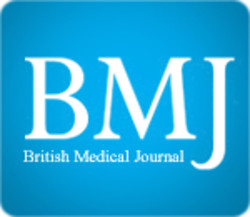 “This review focuses on the possible roles of phytocannabinoids, synthetic cannabinoids, endocannabinoids, and “transient receptor potential cation channel, subfamily V, member 1” (TRPV1) channel blockers in epilepsy treatment.
“This review focuses on the possible roles of phytocannabinoids, synthetic cannabinoids, endocannabinoids, and “transient receptor potential cation channel, subfamily V, member 1” (TRPV1) channel blockers in epilepsy treatment.
The phytocannabinoids are compounds produced by the herb Cannabis sativa, from which Δ9-tetrahydrocannabinol (Δ9-THC) is the main active compound. The therapeutic applications of Δ9-THC are limited, whereas cannabidiol (CBD), another phytocannabinoid, induces antiepileptic effects in experimental animals and in patients with refractory epilepsies.
Synthetic CB1 agonists induce mixed effects, which hamper their therapeutic applications. A more promising strategy focuses on compounds that increase the brain levels of anandamide, an endocannabinoid produced on-demand to counteract hyperexcitability. Thus, anandamide hydrolysis inhibitors might represent a future class of antiepileptic drugs. Finally, compounds that block the TRPV1 (“vanilloid”) channel, a possible anandamide target in the brain, have also been investigated.
In conclusion, the therapeutic use of phytocannabinoids (CBD) is already in practice, although its mechanisms of action remain unclear. Endocannabinoid and TRPV1 mechanisms warrant further basic studies to support their potential clinical applications.”
https://www.ncbi.nlm.nih.gov/pubmed/31839498
“Cannabidiol is in clinical use for refractory epilepsies.”
https://www.epilepsybehavior.com/article/S1525-5050(19)30373-7/fulltext

 “Epilepsy is a neurological disorder that affects approximately 50 million people worldwide.
“Epilepsy is a neurological disorder that affects approximately 50 million people worldwide. “In Italy, medical grade cannabis (MGC) can be prescribed for different medical conditions, including drug-resistant epilepsy (DRE), once standard and approved therapies have failed, or caused non-tolerable side effects.
“In Italy, medical grade cannabis (MGC) can be prescribed for different medical conditions, including drug-resistant epilepsy (DRE), once standard and approved therapies have failed, or caused non-tolerable side effects. “Drug-resistant seizures are life-threatening and contribute to sustained hospitalization.
“Drug-resistant seizures are life-threatening and contribute to sustained hospitalization. “The endocannabinoid system (ECS) is comprised of cannabinoid receptors 1 and 2 (CB1R and CB2R), endogenous ligands, and regulatory enzymes, and serves to regulate several important physiological functions throughout the brain and body.
“The endocannabinoid system (ECS) is comprised of cannabinoid receptors 1 and 2 (CB1R and CB2R), endogenous ligands, and regulatory enzymes, and serves to regulate several important physiological functions throughout the brain and body. “The study aims to investigate: (1) the prevalence of cannabis among epileptic patients seen at Mansoura University Hospital, (2) serum levels and gene expression of cytokines in epilepsy patients and the controls. and (3) the possibility that cannabis use affects the cytokine levels in epilepsy patients, triggering its future use in treatment.
“The study aims to investigate: (1) the prevalence of cannabis among epileptic patients seen at Mansoura University Hospital, (2) serum levels and gene expression of cytokines in epilepsy patients and the controls. and (3) the possibility that cannabis use affects the cytokine levels in epilepsy patients, triggering its future use in treatment. “In final appraisal documents the UK National Institute for Health and Care Excellence has recommended the use of cannabidiol with clobazam for treating seizures associated with two rare and severe forms of epilepsy: Lennox-Gastaut syndrome and Dravet syndrome.
“In final appraisal documents the UK National Institute for Health and Care Excellence has recommended the use of cannabidiol with clobazam for treating seizures associated with two rare and severe forms of epilepsy: Lennox-Gastaut syndrome and Dravet syndrome. “EpidiolexTM , a form of highly purified cannabidiol (CBD) derived from
“EpidiolexTM , a form of highly purified cannabidiol (CBD) derived from